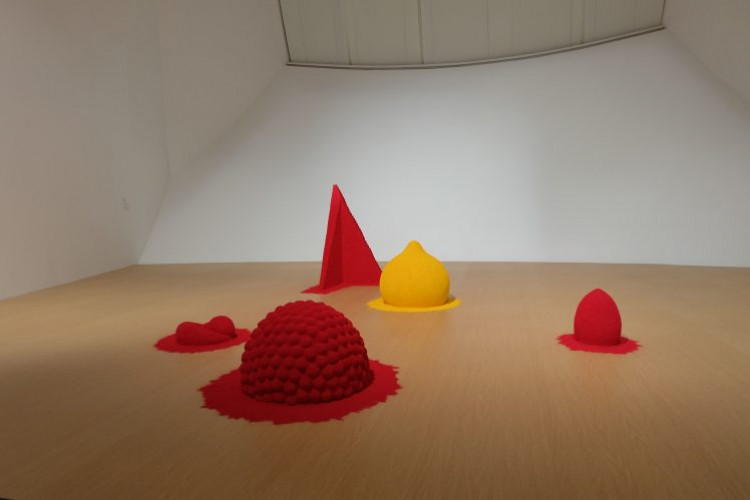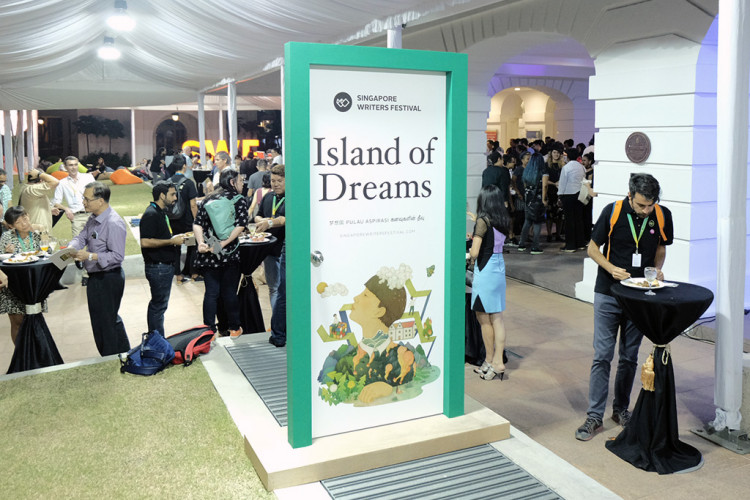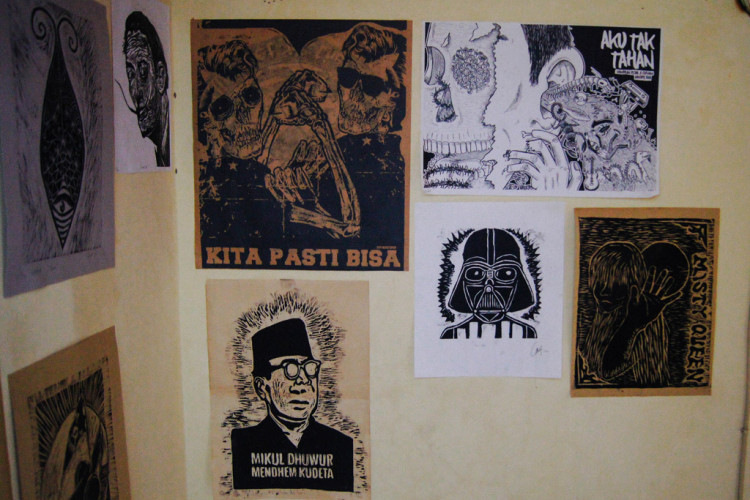Mocking the Pain with Kamengski
Stopping over the Parody center of Jakarta City
by Ken Jenie
















In the world where memes (and cats) are all over the social media (most of them are made for laughing purposes), it might come to mind that finally society has arrived at its most stressful state. Traffic jams, poor air quality, a crummy economic state, and nerve-wracking daily jobs are turning people crazy. And for that, people need an escape. Some people express their anger through a bitter 140 character-tweet, some might drown themselves in a new hobby, and some others relieve stress through simpler means: laughing at funny internet memes. Just as Jim Carrey said, “My focus is to forget the pain of life. Forget the pain, mock the pain, reduce it. And laugh.”
Richard Dawkins, an evolutionary biologist and author proposed the term ‘meme’ (based on the Ancient Greek word mīmēma which means: ‘something imitated’) to signify all non-genetic behavior and cultural ideas that are passed on from person to person. And since the memes phenomenon becomes one of the popular internet phenomenons, the term ‘meme’ was also applied to content that spread from user to user online. The first scientific definition for this particular variation was suggested by Patrick Davison in 2009 in his essay The Language of Internet Memes: An Internet meme is a piece of culture, typically a joke, which gains influence through online transmission.
Basically memes are a personal/real life situations captured through a satirical-ironic perspective – most of them picture a silly parody of popular culture. People are invited to laugh at the irony of a real life situation, which might also happen to them. Memes lead people to chuckle at their own lives. The more memes relate to its viewer, the funnier it gets. And when it gets funny enough, it will go viral before we know it.
Kamengski is a Jakarta based brand which steals the highlight for their meme-like laugh-inviting ironical graphics. Kamengski known for their spot-on ironic mixture of pop culture symbol with completely unrelated (often kitschy) local Indonesian icon. Most of the pop-culture and local icons are mixed because of their similar pronunciation or having the same “feeling”. Resulting a tickling, unique and eccentric graphic shirt.
At one time they mingle kitschy icon on “Roma Biskuit Kelapa” shirt, where they clash the image of Rhoma Irama with the packaging of Roma coconut biscuits. At other time, they play with satirical wordplay when they are replacing the letter “M” to “P” from the brand “Hermes”. Some other time, they jumble the distinction of high culture with low culture where they put Chewbacca with a “Firdaus Oil” caption.
Growing up along the scene of the Jakarta Institute of Art and Ruang Rupa is one of Kamengski’s key points. Those two creative environments shape and brings out the wit from Kamengksi. They even took the name Kamengski from one of their senior there. Sulaiman Said, the main personality behind Kamengski explains, “The name Kamengski is a stolen name from our IKJ and Ruang Rupa senior, so if we weren’t there, there simply won’t be any Kamengski out there”.
“We were just a group of teenagers who want to get our own art on some shirts. We were just trying to be cool with the design, but our efforts went nowhere. When we’re finally tired with the pursue of being cool and began experimenting as well as implementing our own jokes into graphics, suddenly the brand started kickin’ it”, Sulaiman Said explains how Kamengski found its tone. Most of its inspiration arises from hang out-jokes, and potentially misread brand names, “Our shirt Google V came out because its Gogle V images that first came to mind when we heard the word ‘Google’, and surprisingly they have the same color chart.”
It turned out that Kamengski’s way of making art is a part of Indonesia’s youth culture itself. The term “plesetan” (made up words/parody/puns) is one of Indonesia’s favorite comedic mode, one that is practiced in daily conversation (Budi Susanto, 1992: 41). Said mentions that, “People started to make their own parody and sending it via social media to us”. Ariel Heryanto, a pop culture analyst points out that there are three key principles of successful jokes: 1. Prevalence, 2. Manipulation, 3. Audience. And it seems that Kamengski has mastered all three. Kamengski’s graphic goes viral frequently on social media, often before they’re printed. Some Indonesian famous people have worn the shirts, and because of that Kamengki’s market getting bigger. They have even started to shipping across abroad.
To Kamengski, there’ll always be room for improvement on wit and creativity. But what is most important to them is to have fun in doing it. “The most important thing to me is to have fun doing Kamengski’s projects. If people feel that our wit is a place to run away from their problem, that will be a bonus,” Said adds.
Visit Kamengski
Kamengski
Jalan Raya Lenteng Agung no. 9 Jagakarsa, Jakarta, Indonesia











